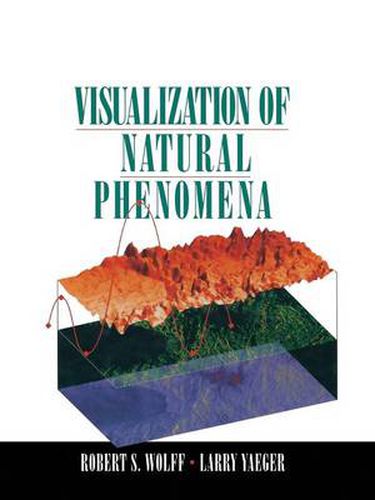Readings Newsletter
Become a Readings Member to make your shopping experience even easier.
Sign in or sign up for free!
You’re not far away from qualifying for FREE standard shipping within Australia
You’ve qualified for FREE standard shipping within Australia
The cart is loading…






This title is printed to order. This book may have been self-published. If so, we cannot guarantee the quality of the content. In the main most books will have gone through the editing process however some may not. We therefore suggest that you be aware of this before ordering this book. If in doubt check either the author or publisher’s details as we are unable to accept any returns unless they are faulty. Please contact us if you have any questions.
by David C Nagel In the last five years visualization has gone from the lab to become a desktop technology for many scientists. Images and 3-D renderings of data sets and mathematical models have evolved from the high-priced hardware and customized software of graphics professionals to low-cost, off-the-shelf commercial software running on personal computers. fu such, scientific visualization has taken its place beside mathematical modeling as an everyday means of interacting with one’s data. This has significantly changed both the amount and the quality of information that scientists are able to extract from raw data, and has effectively established a new paradigm for scientific computing. In addi tion, new, low-cost hardware and software technologies such as CD-ROMs, digital video, and Apple’s QuickTime time-based media of image and and compression technologies have enabled large amounts animation data to be easily accessible to the average researcher or teacher through the personal computer. However, little has been done in the way of providing a context within which the researcher or teacher could learn which approaches might be best suited for a given problem. Furthermore, most scientists are unfamiliar with the terminology and concepts in modern computer graphics, which simply steepens the learning curve for them to apply the new technologies to their work. fu a result, researchers and teachers are not yet taking full advantage of the new paradigm.
$9.00 standard shipping within Australia
FREE standard shipping within Australia for orders over $100.00
Express & International shipping calculated at checkout
This title is printed to order. This book may have been self-published. If so, we cannot guarantee the quality of the content. In the main most books will have gone through the editing process however some may not. We therefore suggest that you be aware of this before ordering this book. If in doubt check either the author or publisher’s details as we are unable to accept any returns unless they are faulty. Please contact us if you have any questions.
by David C Nagel In the last five years visualization has gone from the lab to become a desktop technology for many scientists. Images and 3-D renderings of data sets and mathematical models have evolved from the high-priced hardware and customized software of graphics professionals to low-cost, off-the-shelf commercial software running on personal computers. fu such, scientific visualization has taken its place beside mathematical modeling as an everyday means of interacting with one’s data. This has significantly changed both the amount and the quality of information that scientists are able to extract from raw data, and has effectively established a new paradigm for scientific computing. In addi tion, new, low-cost hardware and software technologies such as CD-ROMs, digital video, and Apple’s QuickTime time-based media of image and and compression technologies have enabled large amounts animation data to be easily accessible to the average researcher or teacher through the personal computer. However, little has been done in the way of providing a context within which the researcher or teacher could learn which approaches might be best suited for a given problem. Furthermore, most scientists are unfamiliar with the terminology and concepts in modern computer graphics, which simply steepens the learning curve for them to apply the new technologies to their work. fu a result, researchers and teachers are not yet taking full advantage of the new paradigm.